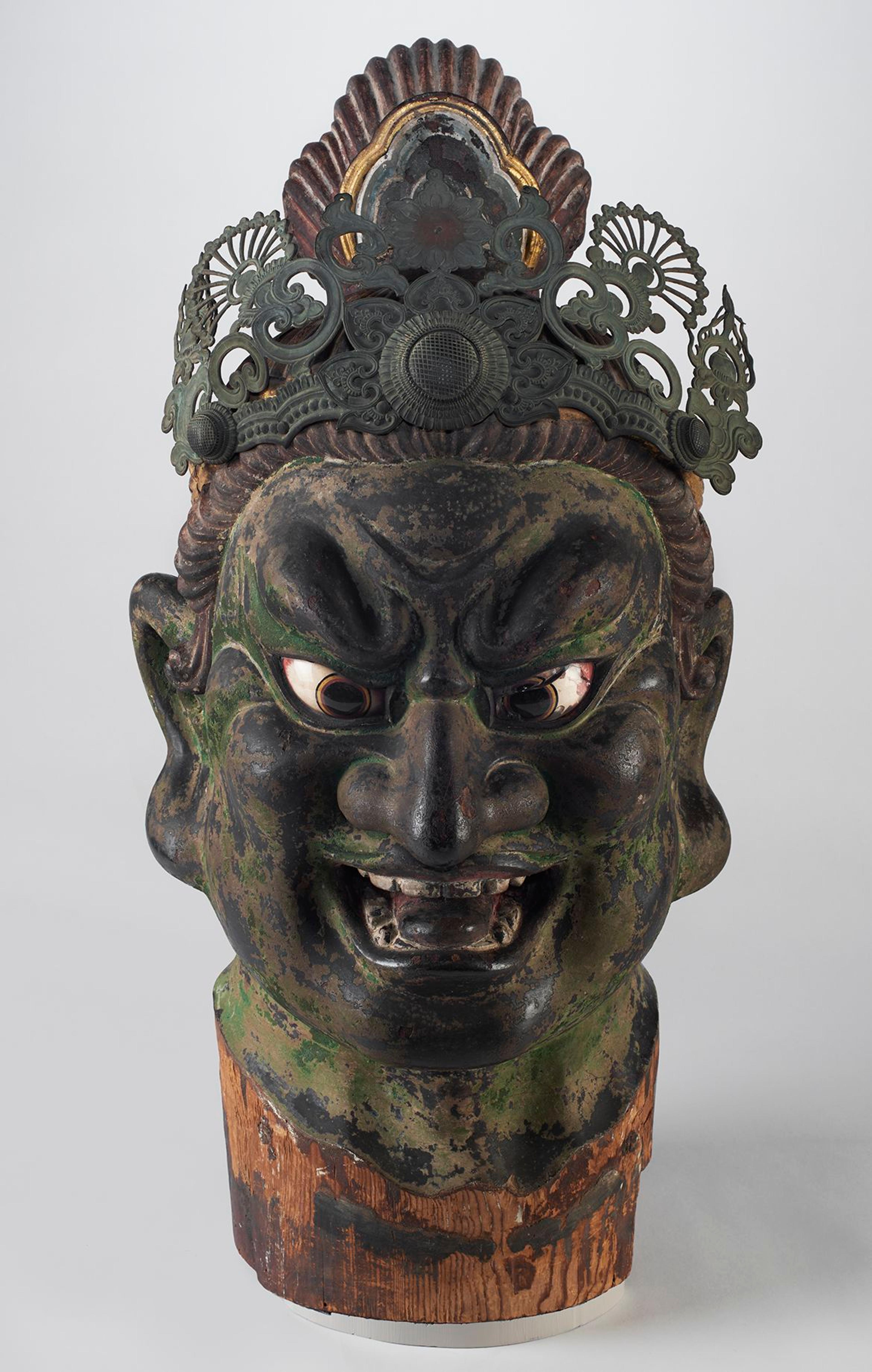Green Tara

Brooklyn Museum photograph
About this Brooklyn Icon
The Brooklyn Museum is commemorating its 200th anniversary by spotlighting 200 standout objects in its encyclopedic collection.
This Indian sculpture is one of the earliest surviving representations of Tara, Buddhism’s goddess of compassion. Goddesses are rare in Buddhism, but female power—by turns fierce and nurturing—became important in the teachings of esoteric schools that developed in India and the Himalayas.
Tara’s manifestations are differentiated by color. Green Tara is the most popular; in unpainted sculptures she can be identified by the half-open lotus she holds. This example draws inspiration from images of ancient South Asian nature goddesses. Depicted as voluptuous to represent fertility, and wearing sumptuous jewels to represent abundance, these goddesses granted good health and plentiful agriculture. Buddhists pray to Tara for the same things, as well as for long life and protection.
With her relaxed pose and slight smile, Tara appears approachable and nurturing. In contrast, a small figure of a multiarmed, dancing goddess appears at lower right. With her bulging eyes and slightly opened mouth, this little goddess represents the more aggressive side of feminine energy.
The eastern Indian state of Odisha, where this monumental image was carved, was an early center for the study and propagation of esoteric Buddhism, known as Vajrayana. After the 8th century, Odishan monasteries lost their funding sources and gradually closed. But the teachings embodied in this sculpture were transferred north to the Pala empire of Bihar and Bengal, and then to Nepal and Tibet.
Object Label
This monumental image of Green Tara is one of the earliest known depictions of the goddess. Tara’s soft, swaying form and easy smile associate her with a tradition of mother-goddess images that has been prevalent in South Asia for millennia. This sculpture was made for a Buddhist monastery in the region of eastern India where many of the teachings that would make up esoteric Buddhism first emerged. The small figure of a four-armed goddess at the lower right is usually identified as Ekajata, or Blue Tara. Early tantric practices emphasized the importance of female energy, as embodied in this slightly fierce subsidiary figure.
Caption
Green Tara, 8th century. Khondalite or gneiss, 67 3/8 x 26 x 17 1/2 in., 1109 lb. (171.2 x 66 x 44.5 cm, 503.04kg). Brooklyn Museum, Carll H. de Silver Fund and Ella C. Woodward Memorial Fund, 60.138. Creative Commons-BY (Photo: Brooklyn Museum, 60.138_SL1.jpg)
Tags
Collection
Collection
Title
Green Tara
Date
8th century
Geography
Place made: Udayagiri or Ratnagiri, Cuttack Hills, Odisha (Orissa), India
Medium
Khondalite or gneiss
Classification
Dimensions
67 3/8 x 26 x 17 1/2 in., 1109 lb. (171.2 x 66 x 44.5 cm, 503.04kg)
Credit Line
Carll H. de Silver Fund and Ella C. Woodward Memorial Fund
Accession Number
60.138
Rights
Creative Commons-BY
You may download and use Brooklyn Museum images of this three-dimensional work in accordance with a Creative Commons license. Fair use, as understood under the United States Copyright Act, may also apply. Please include caption information from this page and credit the Brooklyn Museum. If you need a high resolution file, please fill out our online application form (charges apply). For further information about copyright, we recommend resources at the United States Library of Congress, Cornell University, Copyright and Cultural Institutions: Guidelines for U.S. Libraries, Archives, and Museums, and Copyright Watch. For more information about the Museum's rights project, including how rights types are assigned, please see our blog posts on copyright. If you have any information regarding this work and rights to it, please contact copyright@brooklynmuseum.org.
Have information?
Have information about an artwork? Contact us at

